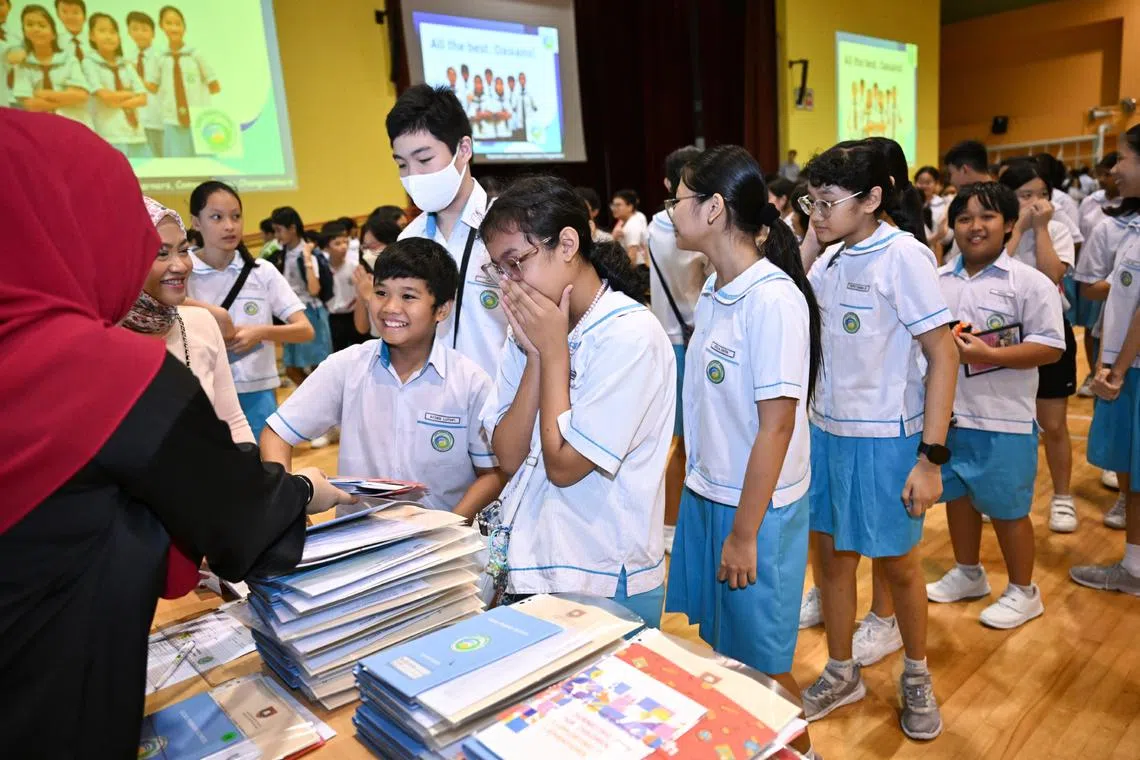Larger PSLE cohort in 2024 could have contributed to lower cut-off points for some popular schools
Sign up now: Get ST's newsletters delivered to your inbox

The Education Ministry plans for enough places in Secondary 1 for all PSLE pupils in a cohort, said Mr Shawn Huang.
PHOTO: ST FILE
Follow topic:
SINGAPORE – Pupils could face more “stringent” cut-off points when more of them with the same Primary School Leaving Examination (PSLE) scores pick the same schools, said Senior Parliamentary Secretary for Education Shawn Huang on Jan 8.
“The larger cohort taking the PSLE in 2024 could also have contributed to this effect for some popular schools,” he added.
Cut-off points for schools can fluctuate from year to year, depending on the cohort’s PSLE scores and their school choices, he said.
He was responding in Parliament to a question by Workers’ Party MP He Ting Ru (Sengkang GRC) on the results of the Secondary 1 posting exercises and the guidance or preparation given to parents for cohorts with more competition.
Mr Huang said students and parents are encouraged to use previous years’ cut-off points as references and in 2024, were asked to select “at least two to three schools where their PSLE score falls below the school’s previous cut-off points”.
“This would increase their chances of securing a place in one of their preferred school choices,” he said, adding that students and parents should look beyond the school’s cut-off points and factor in the school’s culture, programmes, students’ interests and strengths.
He said the Ministry of Education (MOE) plans for enough places in Secondary 1 for all PSLE pupils in that cohort.
“This means that every student who takes the PSLE and qualifies for secondary school will be guaranteed a place at one of our secondary schools,” he said, adding that the ministry had taken into account the larger cohort in 2024 in its planning.
More than 90 per cent of the cohort were placed in schools within their six choices, said Mr Huang, and this was consistent across all posting groups.
The remaining students were posted to the schools nearest to their homes that had vacancies in their eligible posting groups.
In a follow-up question, Ms He asked about the percentage of appeals and how many were successful, as well as how parents are guided during the appeal process.
Appeal percentages are “very low”, Mr Huang said, which is consistent with previous years. Appeals go directly to the schools, he added.
For appeals, parents and students can go to each school to find out their appeal processes or approach MOE for help, he said.
Some parents had raised concerns in December 2024 about their children not making it to their secondary school of choice, with some wondering if this was due to the larger Dragon Year cohort.
In response to queries, MOE said then that the posting outcomes were “comparable” to those of the previous cohort, with more than 80 per cent of pupils posted to a school of their first, second or third choice.
Most pupils who needed a tie-breaker were sorted by citizenship and school-choice order, with about one in 10 going through computerised balloting, said a spokeswoman for MOE. These trends were similar to those of previous years.
In 2024, 40,894 pupils sat the PSLE, compared with 38,088 in 2023, 37,095 in 2022 and 39,119 in 2021.
Gabrielle Chan is a journalist at The Straits Times, and covers everything related to education in Singapore.


